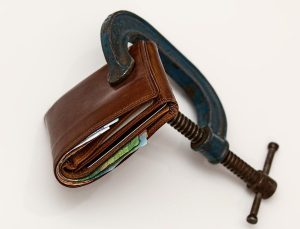Small Business Cash Flow Management: Why It’s Important and How to Deal With Problems

Why Is Cash Flow Important to a Small Business?
- Business expansion – You can’t grow without having cash reserves on hand. Keep money set aside for opening new premises, buying new stock, and marketing to new clients
- Manage emergencies – You never know when disaster might strike; having enough in the bank to cover emergency kit repair, economic downturns, and other unforeseen circumstances is vital
- Cover debts and protect your business credit – Proper management of your cash receipts means you’ll always be able to pay your debts and suppliers on time. This means your business credit score will stay healthy and you won’t get trapped in a disastrous debt cycle
- Negotiating power – Being able to pay suppliers upfront can often lead to more favorable terms and discounts. Plus, not needing to take out credit can give you more flexibility to negotiate
Common Small Business Cash Flow Problems
- Not holding enough reserves – You should always aim to have cash in the bank to cover at least three to six months of expenses. Small businesses that fail to do this can get hammered by unforeseen costs, go into steep debt, and potentially close completely
- Growing too fast – While this seems counterintuitive it’s actually incredibly common for new businesses. For example, you could take on 100 new orders in one week but won’t receive payment for these for at least 30 days. Meanwhile, you still need to cover the cost of those sales. Without adequate cash reserves, you’ll fail to meet your orders
- Late payments – Almost every single small business, freelancer, and entrepreneur in America has faced the problem of late payments of invoices. You’ll almost certainly need to dip into cash reserves to cover costs until you get paid
- Bad pricing – Sell your goods and services at too high a price and you’ll scare off customers; going too low can lead to business failure. Many brand new small businesses struggle to hit this balance and can find cash reserves taking a hit
Examples of Cash Flow Management Problems in Business
Let’s take a look at a typical cash flow statement to use as an example. Remember cash flows aren’t like your income or profit and loss statement. A cash flow simply records when cash goes in or out of your business for any reason. Any movements in red represent cash going out in our example below.
Cash flow from operations for XYZ Company |
|
|---|---|
| Net income | $50,000 |
| Additions to cash | |
| Depreciation | $4,000 |
| Increase in accounts payable | $3,000 |
| Subtractions from cash | |
| Increase in accounts receivable | ($40,000) |
| Increase in inventory | ($15,000) |
Net cash from operations |
$7000 |
| Cash flow from Investing | |
| Purchase of equipment | ($3,000) |
| Cash flow from financing | |
| Notes payable | $1,500 |
Cash Flow at 31st August 20XX |
$5,500 |
Looking at XYZ’s performance it seems we have a clear victim of overtrading. With a huge increase in accounts receivable it looks like the organization has taken on a big order and has spent a significant sum of cash on inventory and equipment to fulfill it.
However, all of those sales have gone into accounts receivable, meaning it won’t receive this cash for at least a month or more. This leaves the company on dangerously low cash reserves of just $5,500 to cover any emergencies this month.
In addition, there’s always a risk that these clients come up short or pay late leaving a very risky $40,000 the company might not receive any time soon.
Plus, looking at the low increase in payables it seems like XYZ company is paying its debts on time or early. It might want to negotiate better payment terms to improve cash flow or it may even need to miss payments if cash runs out.
Finally, with the large purchase in inventory to cover the order at almost half the cost of sales, it suggests XYZ might be pricing its goods far too low and might want to up prices.
Effective Cash Flow Management Tips for Small Businesses
- Don’t be too lenient with customers – You’ll want to strike a balance between giving your clients enough time to pay but not being too charitable. Don’t be afraid to chase unpaid invoices and know you’ll always have the option to take formal action where necessary. If you’ve built a good relationship from the start with clients and suppliers this shouldn’t be much of an issue, though
- Build a cash reserve – Always try to put some of your profits aside each month into your emergency cash reserves. Having liquid cash on hand is absolutely essential for the survival of any small business. This should be around three to six month’s worth of your average expenses. You can use the rest of your cash to invest and grow
- Get good accounting software – The larger your business gets the more complicated the transactions become. If you’re still using simple spreadsheets it can be easy to lose track of invoices and payments. It’s almost always worth the extra cost to get a good piece of management software in to keep you on track
- Cash flow is more important than profit – Your business can show a profit on paper but if you don’t have the cash in the bank to back it up you could still end up failing. Liquid cash should always be your number one priority when managing any business. If you check your earnings against your break-even point, but money still feels tight, it’s likely you need to fix your cash flow
- Encourage early repayments – You’ll want your clients to pay you as soon as possible so you might want to put early repayment discounts on your invoices to encourage faster receipt of cash. Plus, if you have a large invoice it’s worth splitting it up over several payments to make it easier for customers to pay back and you’ll be guaranteed some cash every month
- Reduce or delay expenses – Conversely, while you want customers to pay quickly, you should be trying to extend your own payment deadlines as long as you can. Try to negotiate extensions where you can and opt for Net 30 vendors where possible. Plus, you should always be looking for ways to boost efficiency and decrease expenses
- Manage your inventory – If you run an e-commerce store or retail business that needs a lot of stock you’ll need to manage it carefully. Buying too much can mean your cash flow takes a hit while buying too little means you’ll struggle to fill orders. You might want to consider buying some stock management software to track seasonal variations and other fluctuations
Conclusion
While small business cash flow management might seem a little confusing at first, with a little time and effort you can really start to see where you can make some savings. If it’s not something you’re actively managing right now, we highly recommend making it your number one priority.
Those organizations that successfully manage cash flows are much more likely to succeed and turn a tidy profit. Remember to keep chasing your invoices, ensure you always have a healthy cash reserve, and reduce your expenses as much as you can.




 To take your small business to the lofty heights of being a market leader in the foreseeable future, you’re going to have to start turning over a major profit sooner rather than later. To do this, you have to treat solidifying the money that you do make just as seriously as actually making it. It’s quite simple – if you continue to waste your profit, you won’t be able to invest it into further growth going forward.
To take your small business to the lofty heights of being a market leader in the foreseeable future, you’re going to have to start turning over a major profit sooner rather than later. To do this, you have to treat solidifying the money that you do make just as seriously as actually making it. It’s quite simple – if you continue to waste your profit, you won’t be able to invest it into further growth going forward.